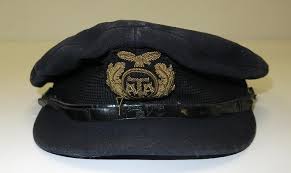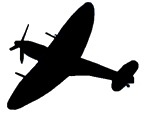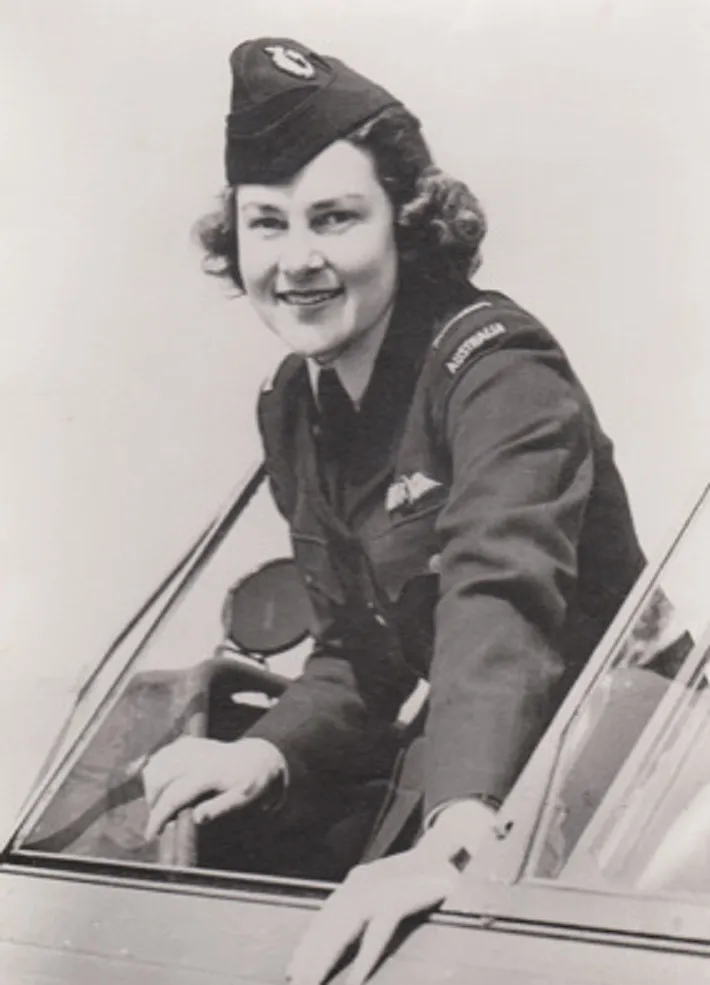Australian Air Transport Auxiliary Pilot
Margaret Helen (Mardi) was born in Melbourne, the youngest child of Sir Herbert and Lady Jessie Gepp. Perhaps the 10 years separating Mardi from her next sibling contributed to the freedom of choice allowed her by her hitherto strict father. Light aircraft flights with him sparked her lifelong dedication to aviation.
Soon after leaving school in late 1938, Mardi, with eldest sister Kathleen, embarked for Britain for her presentation at court in London. However, on the voyage she became close to RAF Flight Lieutenant Richard Gething. He was the navigator and relief pilot of a Vickers Wellesley Bomber that had just set a new non-stop long-distance flight record of 11,526 kilometres flying from lsmailia in Egypt to Darwin.
On arrival in Britain, Mardi switched her plans for a London season; with permission from her father, she enrolled in a flying school. After earning her A pilot's licence at age 18, Mardi's further training was interrupted by the approach of World War II.
No passages to Australia were available via the Suez Canal or the Cape, so Mardi and Kathleen took a ship to New York, and then travelled by train to San Francisco, where they stayed for three months until berths across the Pacific became available.
Mardi took advantage of this delay to enrol in Night Instrument Flying and Instructor's Courses at the Boeing School of Aeronautics. Despite having gained all the necessary qualifications, she was too young to officially qualify for her B Pilot's licence, Commercial Licence, and Instructor's Rating until she turned 19, which would not be until that year.
Mardi's plans to train other young Australian women in flying and to organise a Flying Nurses' Corps were cut short when Richard telephoned from Canada, where he was involved in setting up the Empire Air Training Scheme, to ask her father for her hand in marriage. Mardi and Lady Jessie soon were on their way to Toronto, where Mardi and Richard were married in May 1940.
At the end of 1941, Richard was posted briefly to the Air Ministry in London, and then to Karachi. He spent the remainder of the war in the Far East, his last war posting involving army liaison in Burma.
In 1942 (and after initially being rejected because of her height), Mardi became the only Australian Woman chosen for the Royal Air Force Air Transport Auxiliary (ATA).
The ATA was set up to ferry military aircraft from British factories to RAF air bases around the country for use by operational squadrons. This, then, freed up Pilots for combat duties. ATA pilots flew in radio silence and often in bad weather, dodging balloon barrages and at risk of attack by enemy fighters.

Air Transport Auxiliary Uniform Hat
Between 1942 and 1944, Mardi ferried 42 different aircraft types to operational squadrons. This included Spitfires, Hurricanes, Tempests, Typhoons and Mustangs and, Ventura, Wellington, and Blenheim Bombers. In total, Mardi flew over 600 aircraft, often 3 different types in a day.
ATA pilots often had to fly unfamiliar aircraft with little or no training in that aircraft type. Imagine just stepping out of a Spitfire Fighter and being told the next aircraft to be delivered was a Wellington Bomber and "by the way, the manual is on the seat". On many occasions ATA Pilots would land at an operational airstrip to be met by ground crew asking, "Where's the pilot?"
Towards the end of the air war, Mardi's Ferry Pool was disbanded. She returned to Australia, and in early 1945 joined the crew of Lancaster bomber "G for George" as public relations officer for its tour of Australia to raise money for the Third Victory Loan Appeal.
In the 1940s, Mardi also worked briefly for The Age as a society reporter.
When Richard returned to the Air Ministry in late 1945, Mardi joined him to resume life together in a small village south of London. Their two children were born in 1947 and 1949. Mardi continued her flying career as a member of the RAF Volunteer Reserve until Richard was posted for two years to Singapore.
Later the family was stationed in Northern Ireland, then in Scotland, before Richard (now an Air Commodore) worked a final stint at the Air Ministry in London.
In 1959, the family returned to Australia, settling at Red Cliffs, near Mildura. Here Mardi's and Richard's interests turned from powered aircraft to gliders. They became enthusiastic members of the Sunraysia Gliding Club, joined during school holidays by their children, who became solo pilots soon after their 15th birthdays.
Mardi, a keen member of the Australian Women Pilots Association (AWPA), became the first female licensed gliding instructor in Australia, and for a time held the women's altitude record for a glider flight (13,000 feet). Mardi and Richard both became nationally accredited gliding instructors and taught new club level instructors around Australia.
In 1966 they moved to the Gepp family property at Kangaroo Ground near Melbourne, from where they continued their Australia-wide gliding activities. In retirement, they travelled widely around Australia and overseas, visiting wartime and service friends and colleagues. They also took the opportunity to drop into any gliding centres on their route.
When Richard died in 2004, their wonderful partnership in aviation had lasted more than 64 years. Mardi passed away in July 2005.
This profile of Mardi Gething is part of our 60th anniversary feature on the women involved in the success of the Spitfire, both during WWII and afterwards. We are keen to share more of these stories to inspire today’s young women considering a career in aviation, science, or engineering. So, if a member of your family served during WWII as an Australian female for the ATA, please do let us know.
Correction
This article was previously credited to Trevor Dean, when it reproduces the text of Mardi Gething's obituary written by her daughter Mary-Jane Gething and published in The Age newspaper on Aug 11, 2005. Minor amendments and deletions were made to the original work by Mr Trevor Dean, Spitfire Association.


